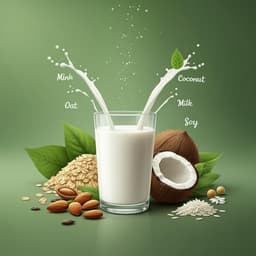
Food Science and Technology
Identification of milk from different animal and plant sources by desorption electrospray ionisation high-resolution mass spectrometry (DESI-MS)
Y. Hong, N. Birse, et al.
This groundbreaking study by Yunhe Hong and colleagues reveals how desorption electrospray ionization mass spectrometry (DESI-MS) can distinguish between cow, goat, camel, soy, and oat milk with remarkable accuracy. With a 100% cross-validation success rate and an impressive sensitivity to detect milk adulteration, this research presents an innovative, eco-friendly solution for milk fraud control.
~3 min • Beginner • English
Related Publications
Explore these studies to deepen your understanding of the subject.







